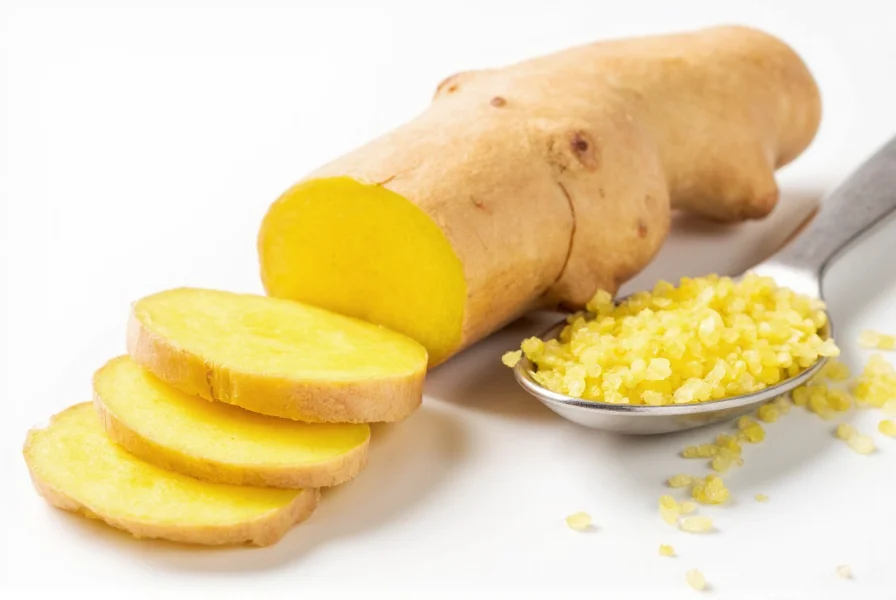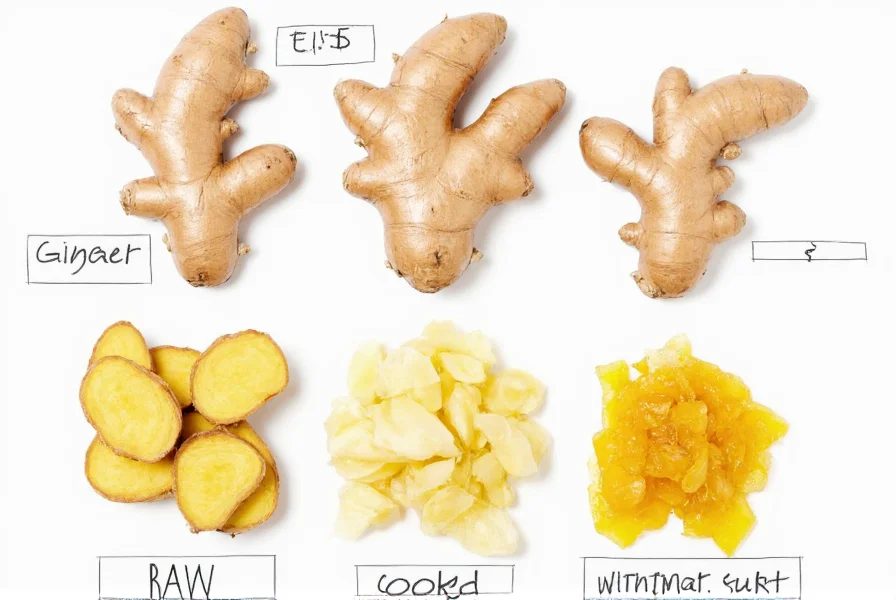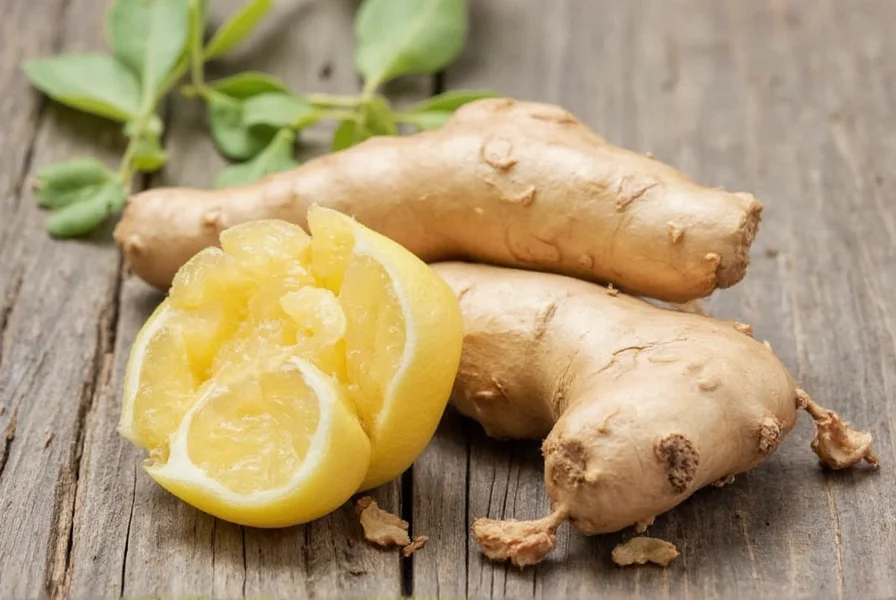For centuries, ginger root (Zingiber officinale) has been valued across cultures for its therapeutic properties and culinary versatility. Modern research continues to validate many traditional applications while uncovering new potential benefits. This comprehensive guide explores evidence-based uses of fresh ginger root, with practical implementation details for home use.
Science-Backed Health Applications
Digestive System Support
Ginger root stimulates saliva, bile, and gastric enzyme production, accelerating gastric emptying. A 2020 World Journal of Gastroenterology review confirmed ginger's effectiveness for:
- Relieving indigestion and bloating
- Reducing symptoms of functional dyspepsia
- Alleviating chemotherapy-induced nausea (when used alongside conventional treatments)
| Digestive Condition | Recommended Ginger Form | Effective Dosage |
|---|---|---|
| Postoperative nausea | Fresh ginger tea | 1g before surgery |
| Morning sickness | Capsules or crystallized ginger | 250mg 4x daily |
| Functional dyspepsia | Fresh ginger extract | 1.2g before meals |
Anti-Inflammatory and Pain Management
Gingerols and shogaols in fresh ginger inhibit inflammatory pathways similar to NSAIDs but with fewer side effects. Research published in Arthritis demonstrated that 2g of raw ginger daily significantly reduced osteoarthritis knee pain. For exercise-induced muscle soreness, consuming 2g of ginger 24 hours before activity decreases pain intensity by approximately 25%.

Immune System Enhancement
Ginger's antimicrobial properties combat respiratory pathogens while its antioxidant compounds boost white blood cell activity. During cold and flu season, regular consumption of ginger tea with lemon and honey provides triple-action support: antiviral effects, mucus thinning, and throat soothing. A 2022 study found ginger extract inhibited replication of certain respiratory viruses at concentrations achievable through dietary intake.
Culinary Applications Beyond Flavor
Metabolism and Weight Management
Adding 2g of freshly grated ginger to meals increases thermogenesis by 10-15% according to research in Nutrition Journal. The pungent compounds activate TRPV1 receptors, temporarily boosting calorie expenditure. For best results, incorporate raw ginger into:
- Smoothies (1 tsp grated)
- Salad dressings (2 tsp juice)
- Marinades for lean proteins
Food Preservation Properties
Ginger's natural antimicrobial compounds extend the shelf life of prepared foods. When added to:
- Fruit salads: Prevents browning for 24+ hours
- Vegetable ferments: Accelerates lacto-fermentation
- Homemade dressings: Inhibits bacterial growth
Use 1-2% ginger by weight of total ingredients for preservation benefits without overwhelming flavor.
Traditional Medicine Applications with Modern Validation
Ayurvedic Applications
In Ayurveda, ginger serves as "vishwa bhesaj" (universal medicine). Modern research supports several traditional uses:
- Vata imbalance: 3g ginger tea with meals improves circulation
- Kapha congestion: Ginger-honey paste clears respiratory mucus
- Ama (toxins): Daily ginger tea enhances liver detoxification enzymes
Traditional Chinese Medicine Applications
TCM classifies ginger as warming and drying. Contemporary studies validate:
- Cold-induced pain: Topical ginger compress reduces menstrual cramps
- Dampness conditions: Ginger tea improves symptoms of water retention
- Qi stagnation: Ginger enhances circulation in peripheral artery disease
Practical Implementation Guide
Selecting and Storing Fresh Ginger
Choose firm, smooth rhizomes with taut skin and minimal wrinkles. Store unpeeled in a paper bag in the refrigerator's vegetable drawer for up to 3 weeks. For longer storage, freeze whole pieces and grate frozen as needed.
Optimal Preparation Methods
The preparation method significantly impacts ginger's bioactive compounds:
- Raw consumption: Maximal gingerol content (anti-nausea)
- Lightly cooked: Converts some gingerols to shogaols (enhanced anti-inflammatory)
- Fermented: Creates new bioactive compounds with increased antioxidant capacity

Daily Usage Protocol
For general health maintenance, incorporate 1-3g of fresh ginger daily through:
- Morning: 250ml ginger-citrus tea before breakfast
- Lunch: 1 tsp grated ginger in salad dressing
- Dinner: 5-10g ginger in cooking
Therapeutic applications may require higher doses (up to 4g daily) under professional guidance.
Safety Considerations
Ginger is generally safe but may interact with certain medications:
- Anticoagulants: May enhance blood-thinning effects
- Diabetes medications: Can amplify blood sugar lowering
- High blood pressure drugs: May cause excessive lowering
Discontinue use 2 weeks before surgery. Pregnant women should limit to 1g daily after first trimester. Those with gallstones should consult a physician before regular consumption.
Conclusion
Ginger root offers remarkable versatility across health and culinary applications. Its effectiveness for digestive issues, inflammation management, and immune support is increasingly validated by scientific research. By understanding proper preparation methods and dosages, you can maximize ginger's benefits while minimizing potential side effects. Incorporating this ancient remedy into your daily routine provides a natural approach to supporting multiple aspects of health.
Frequently Asked Questions
How much ginger root should I consume daily for health benefits?
For general health maintenance, 1-3 grams of fresh ginger root daily provides optimal benefits. Therapeutic applications may require up to 4 grams daily, but consult a healthcare provider before exceeding 1 gram daily if you have medical conditions or take medications.
Can ginger root help with morning sickness during pregnancy?
Yes, multiple studies confirm ginger's effectiveness for pregnancy-related nausea. The American College of Obstetricians and Gynecologists recommends 250mg ginger capsules four times daily. Always consult your healthcare provider before use, especially during first trimester.
What's the best way to prepare ginger for maximum health benefits?
Raw consumption preserves maximum gingerol content for nausea relief. Light cooking converts some compounds to shogaols, enhancing anti-inflammatory effects. For digestive benefits, chew small raw pieces; for inflammation, lightly cook or ferment. Avoid boiling for extended periods as this degrades active compounds.
Does ginger root interact with blood pressure medications?
Yes, ginger may enhance the effects of blood pressure medications, potentially causing excessive lowering. If you take antihypertensive drugs, monitor your blood pressure closely when consuming ginger regularly and consult your physician about appropriate dosage.
How long does fresh ginger root stay good in the refrigerator?
Properly stored unpeeled ginger root lasts 2-3 weeks in the refrigerator's vegetable drawer. Wrap in paper towel and place in a paper bag to absorb excess moisture. For longer storage, freeze whole pieces and grate as needed without thawing.











 浙公网安备
33010002000092号
浙公网安备
33010002000092号 浙B2-20120091-4
浙B2-20120091-4